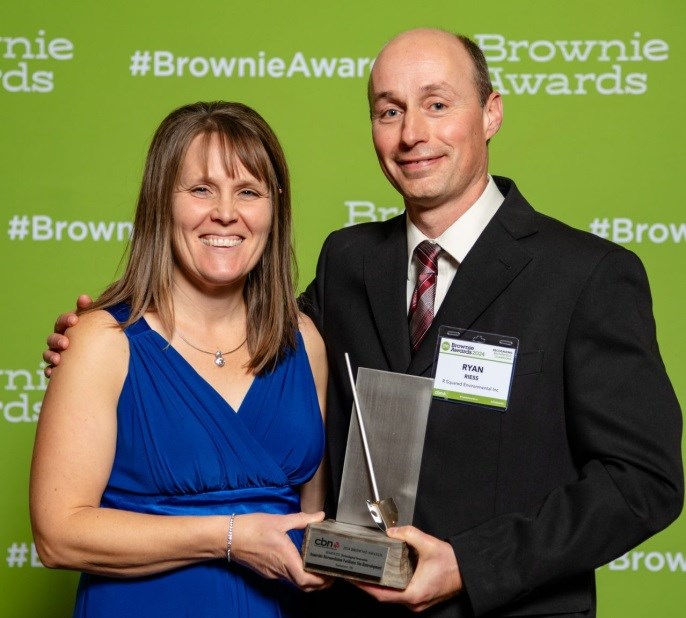SASKATOON – This year’s winners of the Brownie awards have been announced, with Unity native Ryan Riess once again receiving top honours.
The Brownie Awards recognize the builders, innovators and visionaries who are dedicated to the rehabilitation of brownfield sites that were once contaminated, under-utilized and undeveloped into productive residential and commercial projects that contribute to the growth of healthy communities across Canada.
Along with his business R Squared Environmental Inc., Riess was sought out to join a project in Saskatoon, taking a vacant site that was formally a gas bar and service station from 1964 to 2011 to the newest Saskatoon location for fast food chain, Wendy's.
After the storage tanks were decommissioned in 2011, high concentrations of petroleum hydrocarbons (PHCs) and volatile organic compounds (VOCs) were found in the soil and groundwater throughout the site. Various traditional remediation methods were explored, however, were not cost effective. The site remained vacant from 2011 to 2022. In 2022, Riess was approached by the client, hoping he would be able to help with a cost-effective option on cleaning the site with anaerobic bioremediation.
Anaerobic bioremediation is a technology that uses living things like bacteria to treat contaminated soil and groundwater without oxygen. Usually, this method is the most cost-effective, however, it can take the longest amount of time.
Riess had worked with this method of remediation with a previous employer and has been recognized numerous times for his work with past anaerobic bioremediation projects.
“Anaerobic bioremediation is not a common offering across Canada. It requires a great deal of proactive planning and projects can take between one to four years to completion,” said Riess.
He also says a great deal of specific training, expertise and experience is needed as projects can fail due to subtle variables, even if most steps have been taken correctly.
“The environmental industry is generally reactive and driven by real estate transactions, which require remediation within several weeks or emergency situations that need even faster remediation,” added Riess.
For this project, there were difficulties with preparation, design and cost preparation work at the start.
“There were more than a dozen prior environmental assessment reports by others, with a total of thousands upon thousands of pages of data and reports to review,” said Riess.
He said the site had five different treatment areas due to specific contaminants present and concentration levels. While some areas had gasoline, diesel, oil or VOCs only, others had a mixture of several different contaminants.
“I was able to come up with a guaranteed cost and performance proposal , which was critical for the clients, as they were able to evaluate the economics of purchasing the property prior to closing the sale.”
Riess worked on the site for two years, with offsite disposal being completely avoided. A customized mix of solid and liquid amendments containing micro and macronutrients was mixed into the contaminated soils with an excavator as fine-grained soils made injection methods impractical. Overall remediation costs were approximately 90 per cent less when compared to excavating and removal estimates.
“Many of the costs with traditional techniques are eliminated or reduced, such as excavating and hauling away contaminated soils, landfill costs and buying and hauling clean soils. Treating the contaminated soils with anaerobic bioremediation prevented approximately 17,000 km of heavy truck traffic in and around Saskatoon,” said Riess.
Winning the national award means Riess is further established as an industry leader in remediation of the most complex and challenging sites.
“It opens doors and raises awareness of alternative approaches to traditional remediation,” he added.
Riess, who is the son of Ken and Annie, continues to work in remediating long vacant, heavily contaminated properties across Alberta, Saskatchewan and Manitoba.




